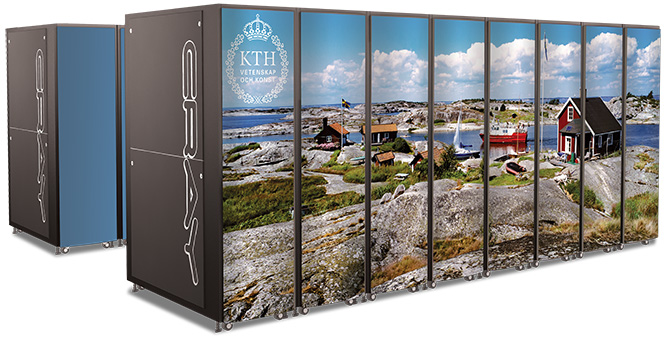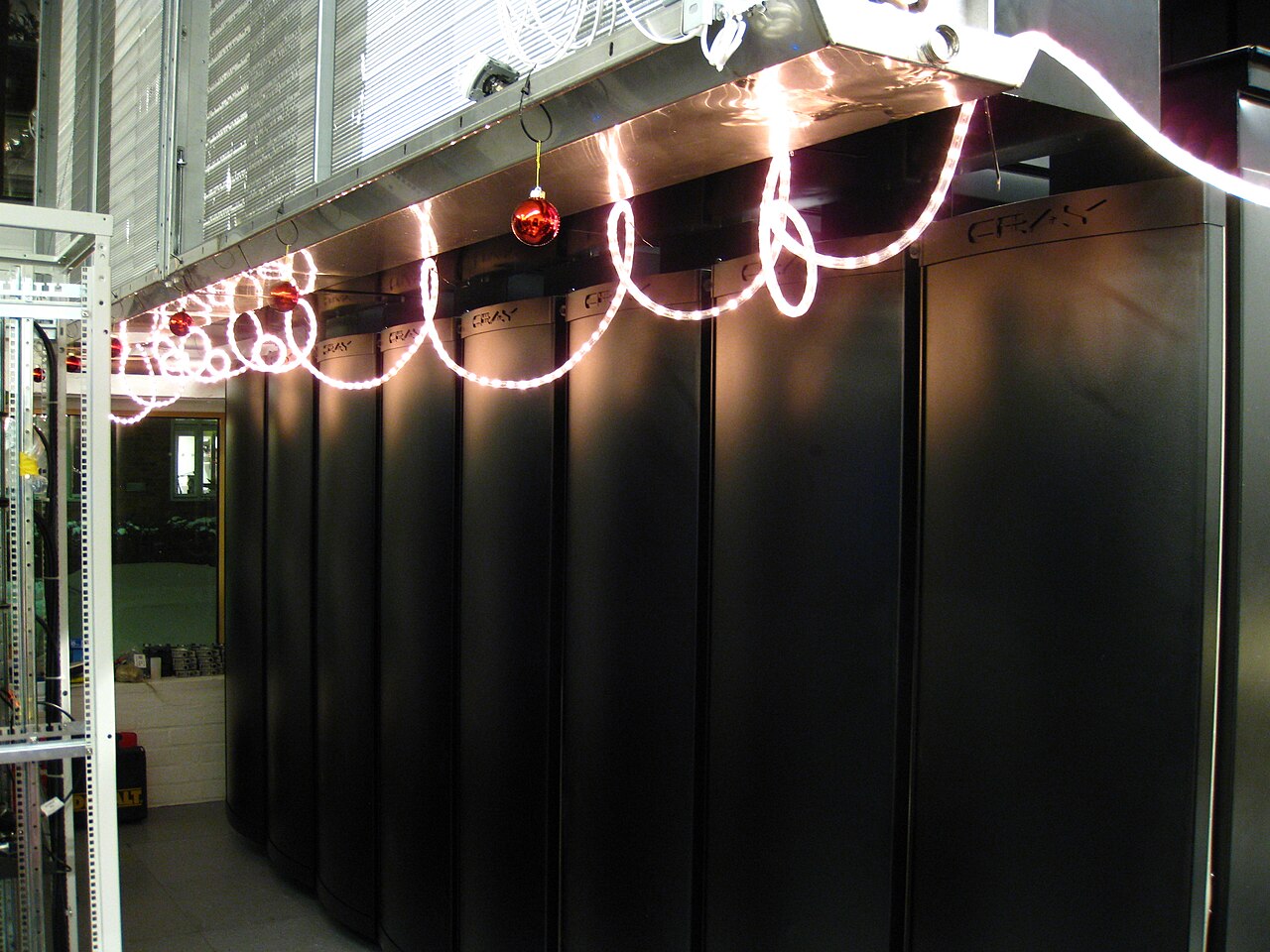Lindgren
Lindgren was PDC’s flagship supercomputing system before Beskow. Lindgren played a significant role in the development of heat re-use systems for supercomputers.
Lindgren was a Cray XE6 system, based on AMD Opteron 12-core “Magny-Cours” (2.1 GHz) processors and Cray Gemini interconnect technology. Initially a system consisting of 5 Cray XT6m cabinets was installed in late 2010. It was 76th in the June 2010 Top500 list . The system was upgraded to 16 CRAY XE6 cabinets at the start of January 2011 and named Lindgren after the prolific and talented Swedish author Astrid Lindgren , who wrote many delightful children’s books.
The 16-cabinet version of Lindgren had a theoretical peak performance of 305 teraflops. When it started operation, the system was ranked in 31st place among the 500 most powerful computer systems in the world ( Top500 list for June 2011 ). The system was in service till 2015 when the Beskow system was installed at PDC.
Lindgren was primarily used for academic research. Some industrial research was also carried out on the system, particularly automotive modelling by Scania.
For a higher resolution version of the image, click on the link below the image.

Lindgren - both rows (high resolution) (jpg 4.7 MB)
Heat re-use developments with Lindgren
In 2009 and 2010 when PDC and KTH were in the process of procuring a new supercomputer (which ended up being the CRAY XE6 Lindgren system), PDC developed a method of capturing the excess heat that would be produced by the system and using it to help to heat another building at KTH. The inspiration for this came from the hydronic/district cooling and heating that is available in many cities and towns in Sweden, which is based on cold or hot water running through underground pipes and into buildings.
The method that PDC developed was based on cool air being blown up from underneath that new system and becoming much hotter as it passed over the sections of the supercomputer. That hot air went through ventilator hoods (which can be seen in the image below) to heat exchanger coils which in turn heated water that was then used for heating another building at KTH. PDC worked with Akademiska Hus, the company that owns the buildings at KTH, and with CRAY on this project - further details about this ground-breaking heat re-use project (and a photo of the heat re-use equipment with Lindgren) can be found in this article . CRAY went on to incorporate water cooling into subsequent models of their supercomputers.

